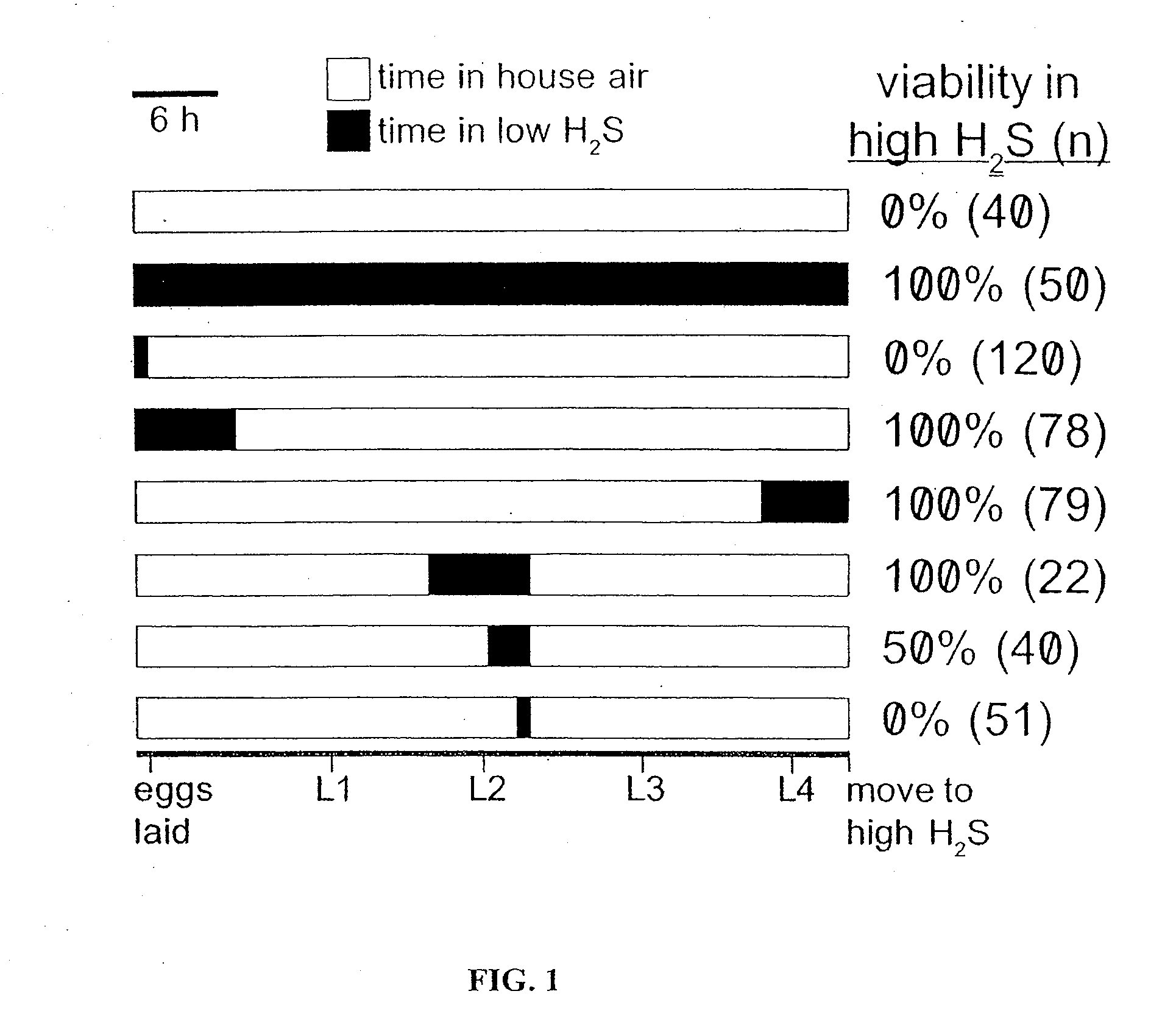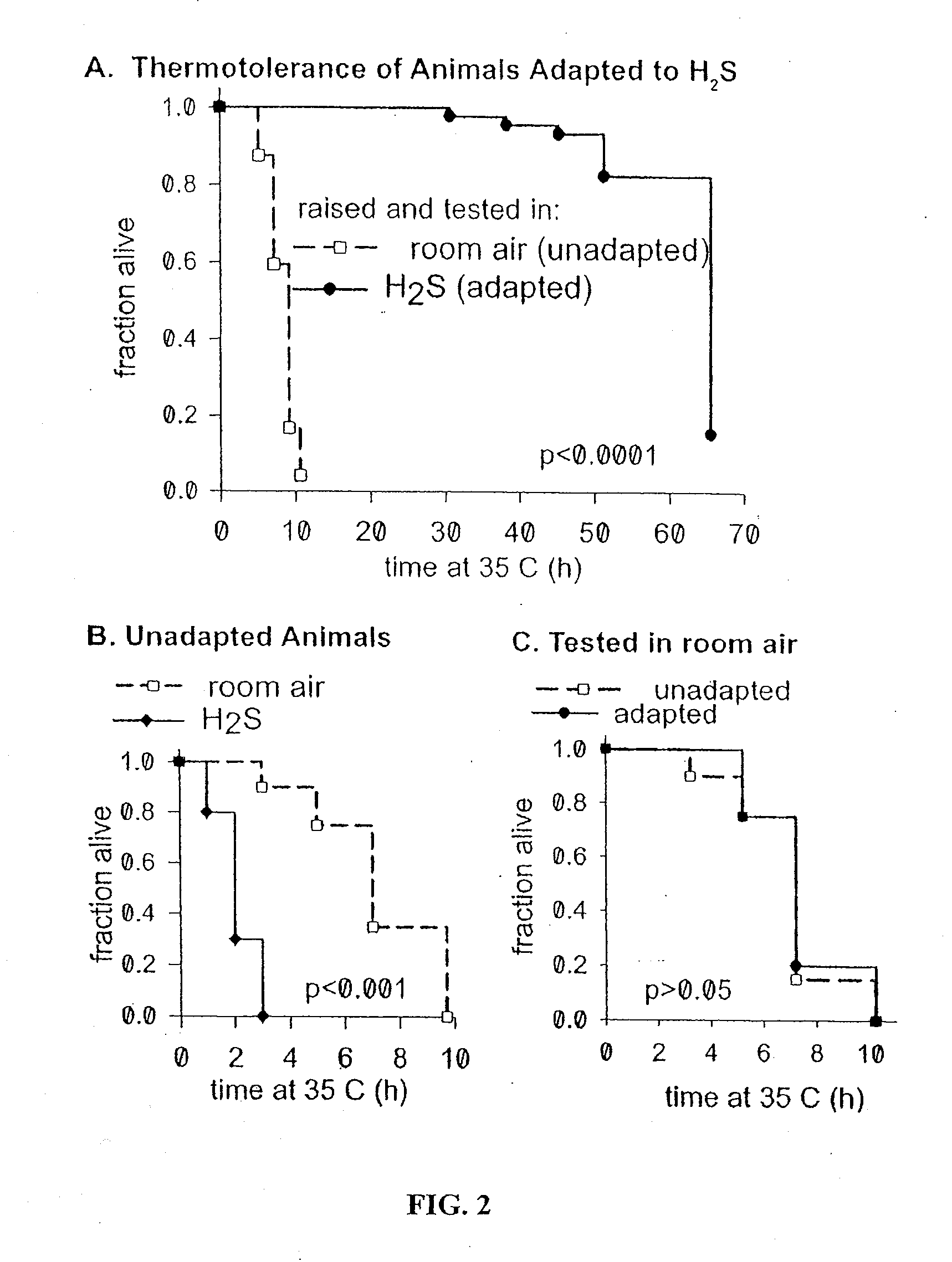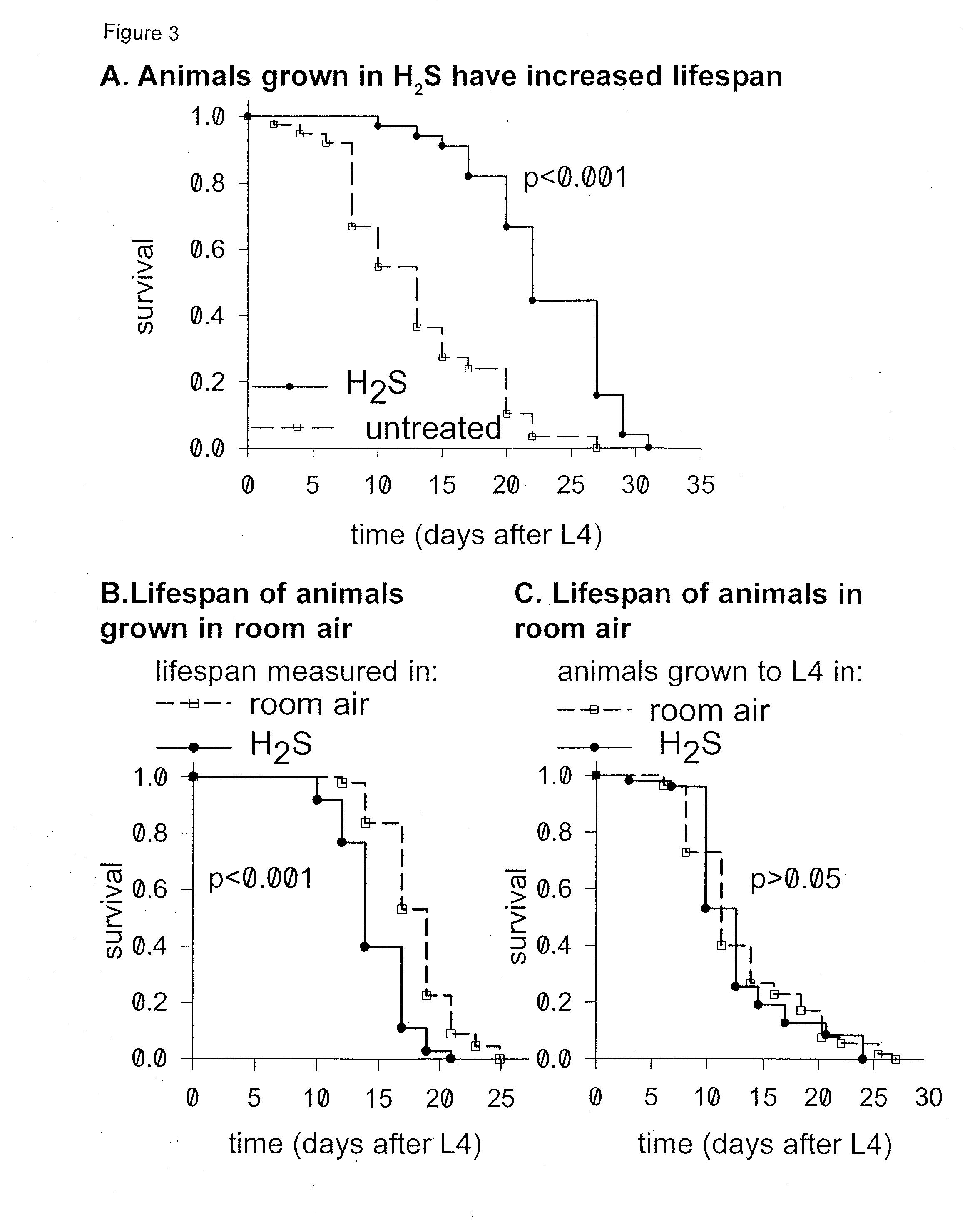Methods and compositions for enhancing lifespan involving sirtuin-modulating compounds and chalcogenides
a technology of sirtuin-modulating compounds and compositions, applied in drug compositions, biocides, extracellular fluid disorders, etc., can solve problems such as life-long extension, and achieve the effect of reducing cytotoxicity
- Summary
- Abstract
- Description
- Claims
- Application Information
AI Technical Summary
Benefits of technology
Problems solved by technology
Method used
Image
Examples
example 1
Adaptation to H2S Increases Thermotolerance and Lifespan in C. elegans
[1244]C. elegans were not adversely affected when grown in atmospheres containing 50 ppm H2S (0.005%) in room air (hereafter referred to simply as H2S; FIG. 9). 50 ppm H2S was chosen because this concentration of H2S has been shown to affect mammalian physiology (Blackstone et al., 2005), but it was not apparently toxic to the worms.
[1245]The inventors hypothesized that the physiological alterations of adaptation to H2S may have lead to increased lifespan and thermotolerance. Adaptation to H2S results in increased thermotolerance in C. elegans (FIG. 2). At high temperature, adapted animals typically have a mean survival time up to 8 times longer than unadapted controls. Although the maximum extension of survival time observed varied between experiments, the effect was quite robust with an average of 77-80% of H2S-treated animals alive when all untreated animals had died (15 independent experiments; FIG. 11). Int ...
example 2
Compositions Enhance Survival Under Hypoxic and Ischemic Conditions
[1257]In one set of experiments, compositions were tested in male C57BL / 6 jugular vein catheterized (JVC) mice, 5-6 weeks old (Taconic), by infusing the animals with the liquid sulfide liquid compositions using 1 mL or 5 mL Luer-Lok syringes (Becton Dickison). An IPTT-300 transponder from Bio Medic Data Systems (BMDS) was used to monitor body temperature. The transponder was injected subcutaneous (S.C.) into the back of the animals at least 24 hours prior to the experiment. A DAS-6008 data acquisition module from BMDS recorded body temperature of the mouse via the transponder, and data was input into a computer spreadsheet and plotted against time.
[1258]Each mouse was dosed with liquid compositions through the in-dwelling catheter using an infusion pump (Harvard Apparatus). The mouse was infused until the temperature chip implanted in the skin registered a body temperature of 33° C. If the mouse showed signs of distr...
example 3
Mouse Body Core Temperature Dependency on H2S Concentration
[1263]In order to determine the concentration of hydrogen sulfide sufficient for the loss of thermoregulation, the inventors exposed mice to a range of hydrogen sulfide concentrations (20 ppm, 40 ppm, 60 ppm, and 80 ppm) (FIG. 5). While 20 ppm and 40 ppm of hydrogen sulfide were sufficient to cause a drop in the core body temperature of a mouse, this was minor compared to the drop seen with 60 ppm and 80 ppm of hydrogen sulfide. From this experiment, the inventor concluded that the loss of thermogenesis is directly dependent upon the concentration of hydrogen sulfide given to the mice.
PUM
| Property | Measurement | Unit |
|---|---|---|
| survival time | aaaaa | aaaaa |
| adsorption | aaaaa | aaaaa |
| blood disorder | aaaaa | aaaaa |
Abstract
Description
Claims
Application Information
 Login to View More
Login to View More - R&D
- Intellectual Property
- Life Sciences
- Materials
- Tech Scout
- Unparalleled Data Quality
- Higher Quality Content
- 60% Fewer Hallucinations
Browse by: Latest US Patents, China's latest patents, Technical Efficacy Thesaurus, Application Domain, Technology Topic, Popular Technical Reports.
© 2025 PatSnap. All rights reserved.Legal|Privacy policy|Modern Slavery Act Transparency Statement|Sitemap|About US| Contact US: help@patsnap.com



